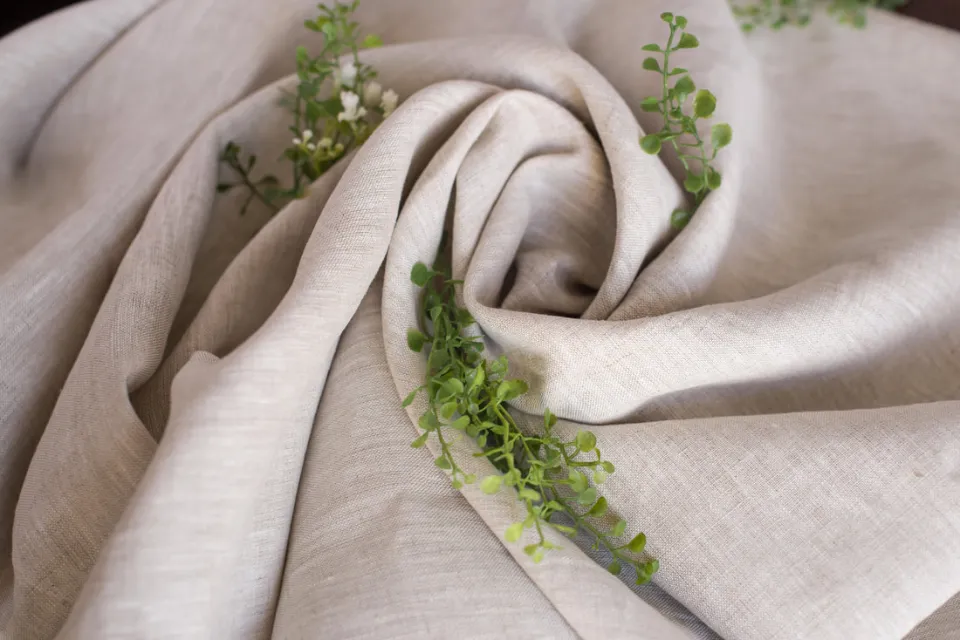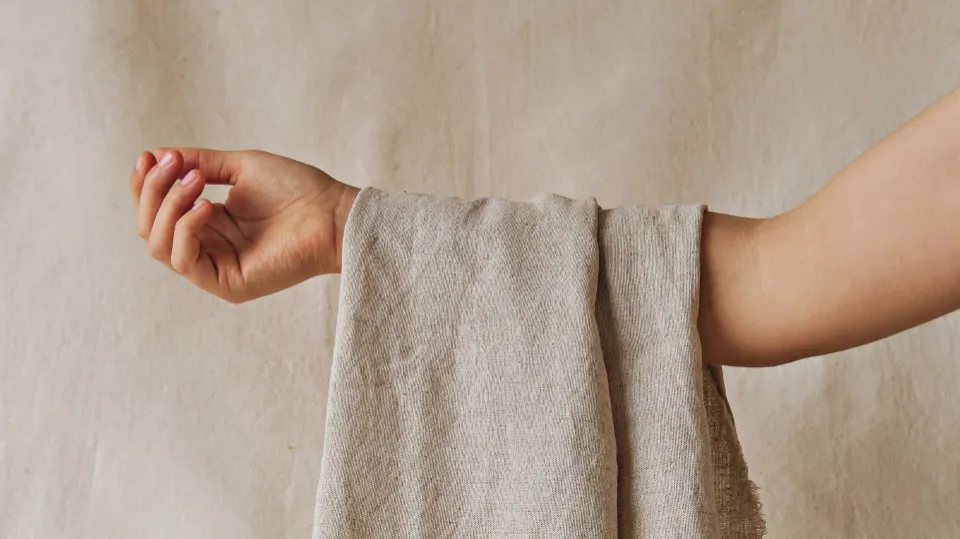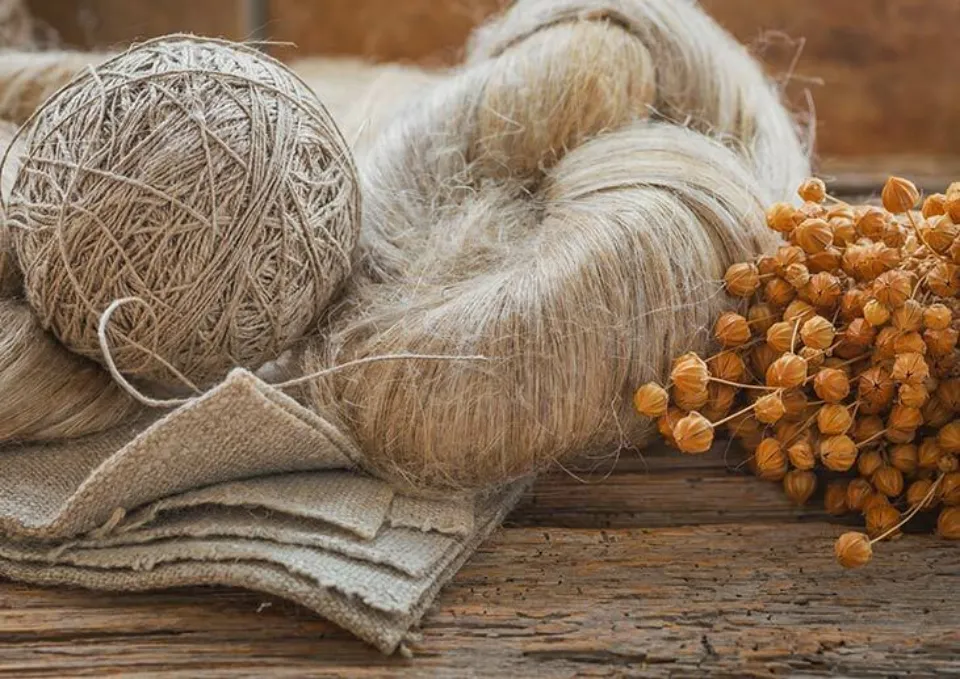The two most common fabric options when looking for luxury bedding are probably linen and cotton. Do you know what is linen fabric?
Linen fabric is a fabric made from flax fibers, a plant that thrives in cooler and more humid climates. It is renowned for having an elegant yet rustic appearance.
Continue reading to learn all there is to know about linen fabric.
What is Linen Fabric?
Linen is a flax-based textile that is predominantly used for homeware applications. While linen and cotton are similar, linen is made from fibers that come from the stems of the flax plant as opposed to the bolls that develop around cotton seeds.
In warm, muggy climates, linen clothing is preferable. In contrast to cotton, which has a propensity to retain moisture for a long time, linen dries quickly, which helps lessen heat retention in excessively warm environments.
Characteristics and Benefits of Linen Fabric

Linen fabric has several characteristics and advantages that make it an ideal option for a wide range of uses:
- Breathability: In warm weather, linen fabric’s exceptional breathability keeps the wearer cool and cozy by allowing air to pass through it.
- Durability: Given its exceptional strength and durability, linen fabric is ideal for frequently used products like workwear and bedding.
- Softness: Clothing made of linen is a wonderful choice because it is incredibly soft and gentle on the skin.
- Moisture absorption: The ability of linen fabric to absorb up to 20% of its weight in water makes it ideal for bedding.
- Elegant appearance: Any product made from linen has a more rustic feel thanks to the fabric’s elegant and natural appearance.
How is Linen Fabric Made?
The constituent material for linen fabric is the cellulose fiber found in the stems of linen plants. A woody, reedy interior and a fibrous, stringy exterior make up linen stalks, like the stalks of many related plants.
Manufacturers of this fiber begin the process of making linen by separating flax fibers from the woody interior of flax stems.
Traditionally, this step has been completed by soaking uncooked flax stalks, but nowadays, producers may use chemicals to accomplish the same result.
These chemicals are removed by washing before flax fibers are spun into yarn, but even after chemical separation, some toxic substances may still be present on the flax fiber.
1. Planting
After growing for approximately 100 days, flax plants are prepared for harvest. Flax plants cannot tolerate high temperatures, so they must be planted during the cooler months of the year to prevent crop death.
2. Growth
Nowadays, flax seeds are typically planted by machines. Herbicides and tilling are typically used to prevent decreased yields in flax crops because flax plants can’t effectively stop the invasion of weeds.
3. Harvesting
These plants are ready to be harvested when the stems of the flax are yellow and the seeds are brown. While it is possible to harvest flax by hand, machines are typically used in this process.
4. Fiber Separation
Following harvest, flax stalks are put through a machine to remove the leaves and seeds. The flax stalk’s fibrous exterior is then separated from its softer interior by manufacturers.
The delicate flax fibers used in the manufacture of textiles could be harmed during this procedure, known as retting.
5. Breaking
The decomposing stalks are then broken up, separating the useful inner fibers from the useless outer fibers.
The flax stalks are crushed by rollers in order to complete this step, and the outer fibers are then removed from the stalks by rotating paddles.
6. Combing
The inner fibers can now be separated from the outer fibers and combed into thin strands. The fibers are ready to be spun after they have been combed.
7. Spinning
Traditionally, spinning flax into yarn was done with a foot-powered flax wheel, but nowadays, flax producers spin their flax using industrial machines.
These short, combed fibers are connected by spreaders, which create rovings, which are then prepared for spinning into flax fibers.
8. Reeling
The finished yarn is reeled onto a bobbin after being spun on a spinning frame.
This reeling procedure must be carried out in damp, humid conditions to guarantee that flax yarn won’t unravel, and the spun yarn is then heated to further guarantee yarn cohesion.
9. Drying
The finished yarn is then reeled onto bobbins and dried by the flax manufacturers. Once the yarn has been dyed, treated, and turned into clothing, home décor, or other textile products, it is ready for production.
What Different Types of Linen Fabric Are There?
While all types of linen fabric are derived from processed and spun flax fiber, there are four main variations in weaving techniques that result in different types of linen fabric:
1. Damask Linen
This delicate and ornate type of linen is woven on a jacquard loom to create an effect resembling embroidery. Damask linen is more frequently used in decorative items and isn’t intended for everyday use.
2. Plain-woven Linen
Cotton dish towels, hand towels, and other linen products are frequently made from plain-woven fabric. It is extremely durable and is not significantly less durable due to the relatively loose weave.
3. Loosely-woven Linen
The least resilient type of linen fabric is loosely woven, which is very absorbent. It is frequently employed to produce sanitary napkins and reusable diapers.
4. Sheeting Linen
Due to its soft, untextured surface and tight weave, sheeting linen is typically used to make linen clothing. Typically, this variety of linen fabric has a higher thread count than other varieties of linen.
Uses of Linen Fabric

Linen fabric is used in a wide variety of products including clothing, bedding, curtains and workwear.
- Fashion: In addition to dresses, jackets, and trousers, linen fabric can be used to create a wide range of other fashionable items.
- Bedding: Because it breathes well and can absorb moisture, linen fabric is a favorite for bedding.
- Workwear: Given its strength and durability, linen fabric is perfect for workwear, particularly in hot climates.
Related Post: Are Linen Pants Business Casual?
How Much Does Linen Fabric Cost?
There are no data on unprocessed linen yarn costs per pound, but woven linen fabric costs range from $5 to $12 per yard.
At these prices, linen is one of the most expensive natural fibers in the world, but it is incontestable that linen remains highly in demand for specific niche applications.
Final Thoughts on What is Linen Fabric
In conclusion, linen is a durable, breathable, and rustic fabric that gives off and elegant look.
It is used in a wide range of products due to these qualities, from curtains and home decor to workwear and bedding.
Consumers who are concerned about the environment frequently choose linen fabric because it is also reasonably simple to maintain and produces with less resource consumption.
FAQs About Linen Fabric
What is Linen Used For?
Today, linen is utilized to create a variety of items, including rope, clothing, curtains, tablecloths, pillows, and rugs.
What is Linen Made From?
Instead of the bolls that develop around cotton seeds, it is made from fibers obtained from the flax plant’s stems.
Is Linen Good to Wear in Hot Weather?
Linen is a top choice for a breathable fabric for hot weather conditions.




